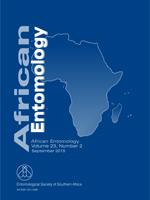The impact of Bacillus thuringiensis and native Trichogramma turkistanica on the infestation rates of two lepidopterous pests, Virachola livia and Ectomyelois ceratoniae, was assessed in field experiments conducted in four pomegranate farms distributed in the Taif region of Saudi Arabia. Pomegranate trees were sprayed with B. thuringiensis spores, and indigenous T. turkistanica was inundatively released during the pomegranate fruiting season from April to September of 2014. The highest infestation rates with E. ceratoniae and V. livia in control and treated trees gradually increased until the end of the season, reaching 79, 54 and 22 % for E. ceratoniae, and 22, 16 and 7 % for V. livia in control, Bacillus-treated trees, and Trichogramma-treated trees, respectively. The mean percentages of fruits infested with E. ceratoniae or V. livia were significantly different between the untreated trees and both the trees treated with Trichogramma and those treated with Bacillus. Moreover, the trees treated with Trichogramma had a lower infestation rate by both E. ceratoniae and V. livia compared to the trees treated with Bacillus. The number of larvae collected from infested fruits varied from one to two larvae per fruit for both E. ceratoniae and V. livia. Use of Bacillus or native Trichogramma to control these pests can achieve high yields of Taify pomegranate of better quality.
BioOne.org will be down briefly for maintenance on 17 December 2024 between 18:00-22:00 Pacific Time US. We apologize for any inconvenience.
How to translate text using browser tools
1 September 2015
Efficacy of Bacillus thuringiensis and Indigenous Trichogramma turkistanica for Controlling Lepidopterous Pests on Taify Pomegranate Fruits
S.M. Sayed,
G. Elsayed,
S.F. Mahmoud,
O.M. Elzahrany
ACCESS THE FULL ARTICLE
It is not available for individual sale.
This article is only available to subscribers.
It is not available for individual sale.
It is not available for individual sale.

African Entomology
Vol. 23 • No. 2
September 2015
Vol. 23 • No. 2
September 2015
biological control
Lepidoptera
Native species
parasitoid
Punica granatum




